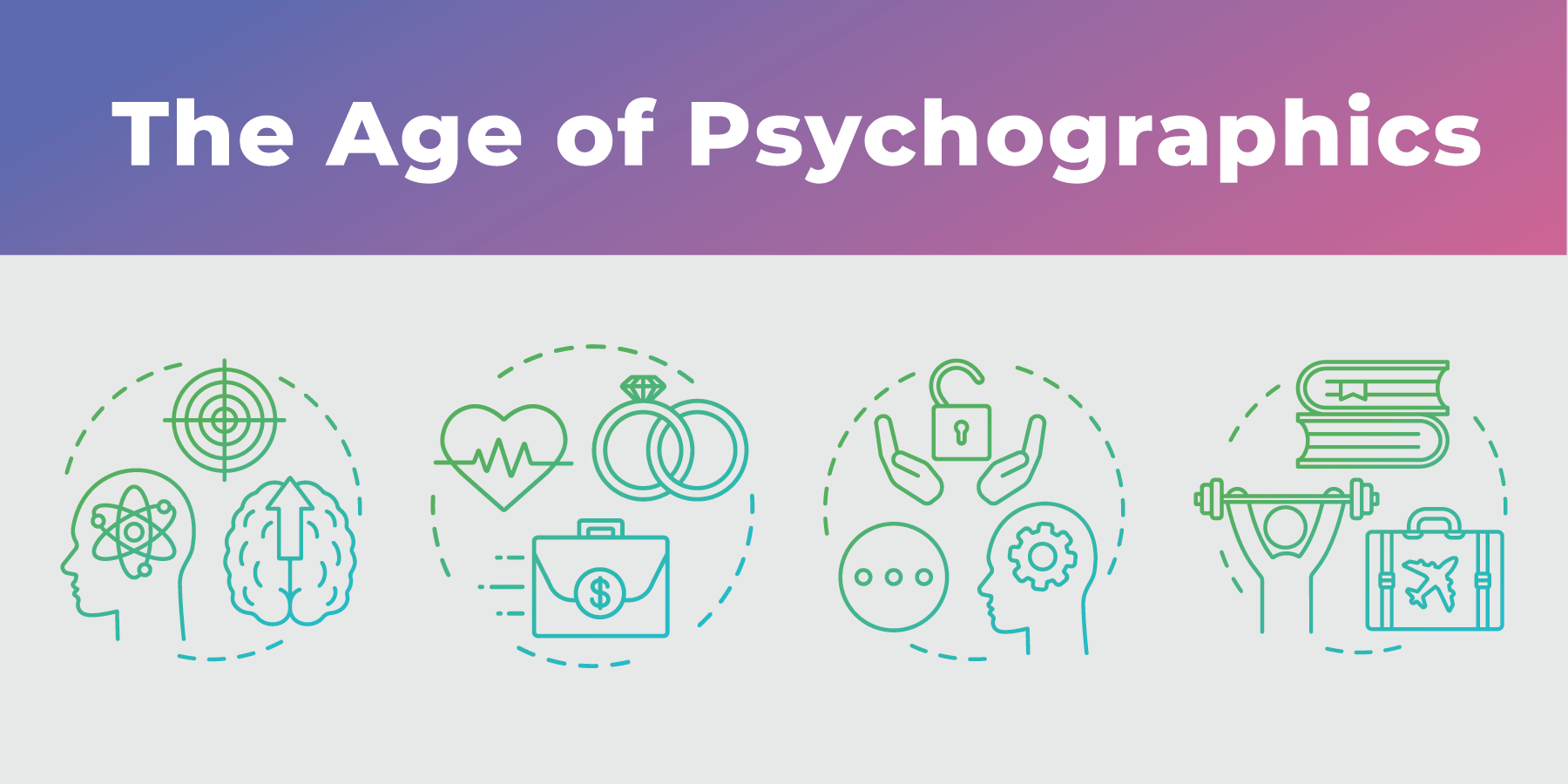Psychographics. If you are interested in social media as an industry (since you are reading this post, let’s presume you are), you must have heard this term. Many times, everywhere. So, what is it and why is everyone in the influencer marketing field talking about it?
Psychographics is a relatively new type of qualitative consumer analysis that has thrived with the rise of social media networking. It tracks and evaluates points that were previously largely inaccessible for advertisers. For decades, brands relied on demographics to predict success of their products. Fast forward to today, thanks to the internet we have access to infinite valuable psychographic information that power our business decision-making! Before we discuss its many advantages, take a look at the differences between demographic and psychographic findings.
| Demographics | Psychographics |
|
|
Demographics increasingly fail to predict behavior. They do not account for individualization and divergent socialization of people from seemingly the same broad category. Latest reminder came this November with the Presidential election. Pundits reflecting on the results in the state of Florida kept returning to the mantra: “Latino vote is not a monolith.” Even multiple demographic matches provided no accuracy in estimating the outcome. Why? Because #psychographics! What people care about is shaped by their life experiences and we align ourselves with likeminded people. Social media has given us a practical insight into how likeminded-ness functions over time.
Q&A with Eric Dahan CEO, Open Influence
Why do psychographics matter?
In the digital world, what you are interested in matters more than anything else, because we engage with our virtual communities as much as (or sometimes more than) within our real neighborhoods. If you are really into baking, your age, gender, or religion are of little relevance. Think of who YOU follow on social media platforms. Aside from your friends, family, or coworkers, it is likely people who do something you want to excel at or showcase something you would like to experience for yourself. While demographics may serve as a unifying characteristic, aspiration and inspiration are stronger motivating factors for action.
Why do psychographics matter for influencer marketing?
Influence is based on trust in any given topic, not on popularity. That’s why psychographics are everything in this industry. Audiences follow creators because they choose to follow them based on values, beliefs, shared interests and so on. It’s very important for brands to understand this when selecting influencers. Not being to identify those passion points could be detrimental to the success of a campaign.
How psychographics work in influencer marketing?
It’s a bit like reverse engineering. You break a campaign request down into keywords. Influencer analytics teams and tools track those to influencers to quantify engagement for each partnership opportunity. It’s not enough if someone posted sometimes about car racing, for example. What matters is posting about relevant automakers and specific circuits to a high rate of engagement. Consistency communicates care and translates into trust and attention, the only valid currency in this industry.
Is there a limit to the potential of psychographics?
As of right this minute, Kim Kardashian has 192 million followers on Instagram. That’s eight times the entire population of the state of Florida! Everyone who follows a global celebrity cannot be approached as a single category. Naturally, understanding psychographics on such a massive scale is a complex undertaking. Some may follow out of passion for fashion, some out of general curiosity, some out of professional interest. In this case, understanding relative engagement is key. Different people engage differently with posts about shopping sprees, site-specific vacations, social justice updates, or miscellaneous tangents from the same account. Kim has posted about getting a law degree, but it does not make her a trusted legal expertise influencer. Not yet anyway.
What is the most common mistake in using psychographics?
The biggest mistake is still relying on just demographics and not factoring in psychographics. When clients present their target audience as this age group, this sex and ethnicity, within this geography… it only makes sense if your product or service is restricted to those communities.
For example, alcohol distribution comes with strict regulations as do types of financial services.
Another possible faux pas is misapplying a psychographic profile when promoting your offer. A meal prep company recently discovered that working with chefs on social media did not yield the expected results despite seemingly natural overlap in interests in nutrition, presentation, and cuisine. Turns out, people who follow chefs are much more likely to want to cook themselves. A gourmet meal prep service did not align with their priorities. Switching attention to wellness and fitness influencers worked better to reach people who value time-saving routines more.
Advertisers should retool their know-how with the latest available information about consumers. With social media engagement expanding exponentially in 2020, psychographics is part of the New Normal in digital business.
__
Sample Case Study: YOU
If you would like to see what your psychographic profile could look like, you can analyze your Facebook, Twitter or LinkedIn data with a special tool from the Psychographics Center at the University of Oxford. It’s free and you may be surprised to learn something new about yourself. Let us know what surprises you the most!
To learn more about how to use psychographics in your influencer marketing strategies, contact Open Influence.

